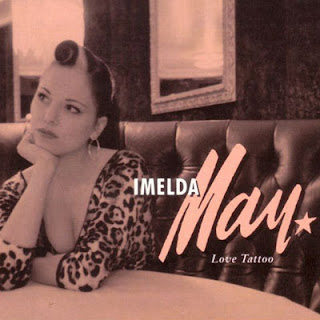The Perfect Coffee Table Book?
Ever had trouble introducing your less enlightened friends and family to what makes Rockabilly so great? Then this illustrated history may be just the thing you're looking for. For both the uninitiated and the enthusiast alike, this visually engaging and easy to read book offers something to truly appreciate. Encompassing the music, artists, history, and fashion, the book contains interviews with many significant figures from the world of Rockabilly and is a great addition to your collection.
It is also very, very pretty.
Consider it pin-up material for your library.
The narrative is established around the conventional wisdom that Rockabilly began with Elvis: "It's arrival can be pinpointed: July 5, 1954, the night Elvis Presley, Scotty Moore, and Bill Black recorded That's All Right Mama in Memphis' Sun Studios". While those interested in a more developed perspective are encouraged to consider the broader history (e.g. http://en.wikipedia.org/wiki/Rockabilly), this premise does provide a useful framework around which the remainder of the book is built upon. However, rockabilly roots and the background of Sun Studios are not overlooked and there is certainly enough depth in this regard to satisfy most. Meanwhile, to ensure that the attention is not lost while reading, every page is accompanied by fabulous photography. I may have personally fallen in love with 5 or 6 different guitars...
You Can't Cover Everything...
While it would certainly be difficult to address the full scope of the topic, there does feel to be some distinct imbalance in what is and is not discussed. Most notably to my mind is the limited consideration provided to the female singers of the original Rockabilly era. Though Wanda Jackson is given significant treatment, other greats such as Janis Martin and Brenda Lee are left aside. In contrast a number of relatively minor male artists are given quite a lot of column space. However, this does serve to better portray the mix of artists and convergence of musical styles that, at least initially, was loosely brought together and termed - often derisively - Rockabilly.
'Round the World
Minor gripes aside the book does live up to it's name, giving a global perspective on Rockabilly and how regional influences both interpreted and influenced the sound and, hence, modern Rockabilly fashion and culture. For those accustomed to the US centric portrayal of Rockabilly the sections on European Rockabilly may be very rewarding. Particularly compelling is the discussion of how the European scene allowed Rockabilly music and style to remain vibrant during the 1960s and 1970s, while Rockabilly in the US all but disappeared due to the pressures of the shifting pop-music industry. This exploration bridges the gap from the traditional Rockabilly era to the Rockabilly Revival, at which point the interviews with modern greats such as Brian Setzer grab your attention.
And More...
The last section of the book takes a look at how Rockabilly has both morphed and stayed the same. From musicians such as Sleepy LaBeef, producing new, yet traditional, Rockabilly music well into the 1990s, to Roots and Revival musicians such as Big Sandy and Imelda May, and Psychobilly juggernauts like The Meteors and The Reverend Horton Heat. If you want to get a feel for where Rockabilly music is going, as energetic and dynamic as the day it began, you will undoubtedly find yourself turning yet one more page through the broad selection of photographs and commentary.
The perfect coffee table book? Perhaps not - but readily the best one I've encountered for some time.
Find a copy and enjoy!




